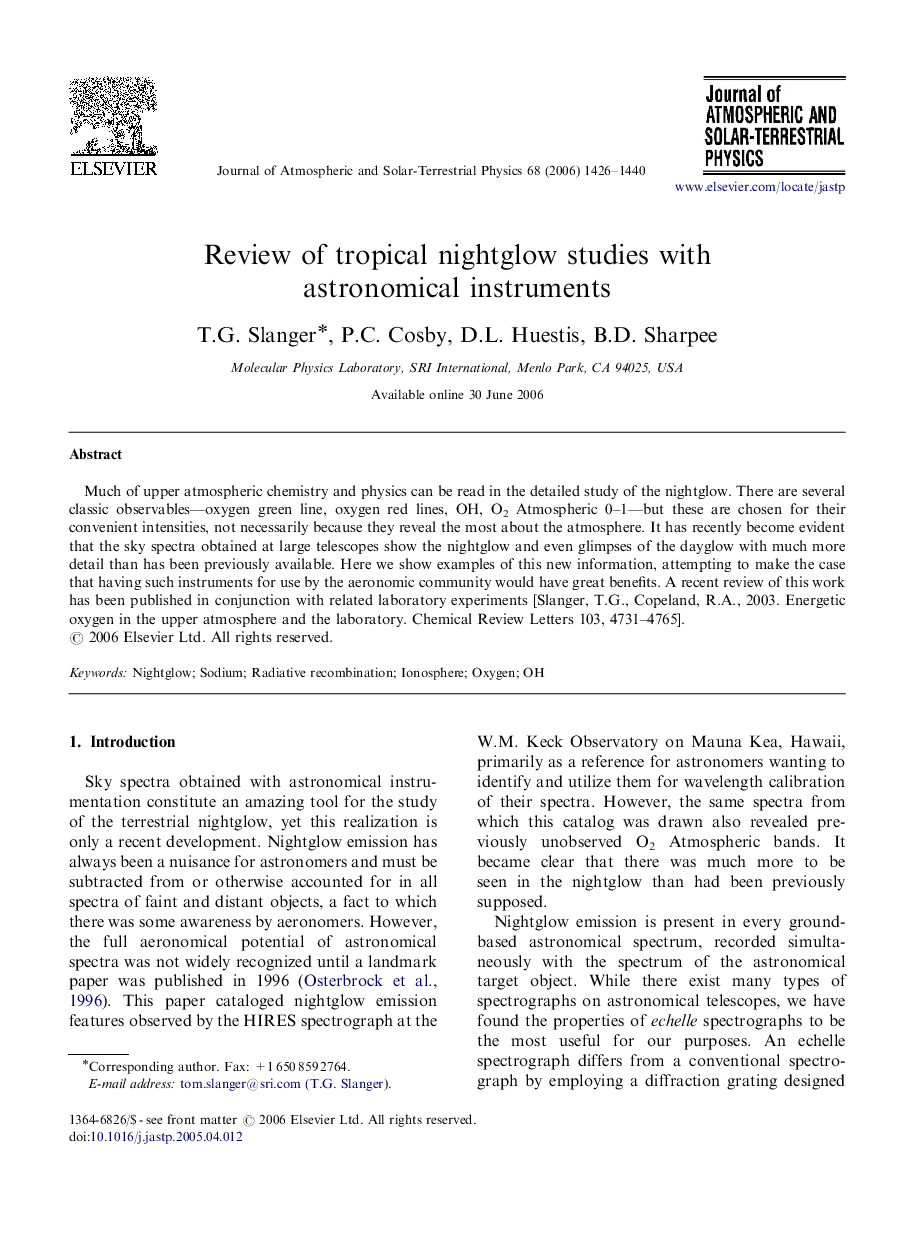| Article ID | Journal | Published Year | Pages | File Type |
|---|---|---|---|---|
| 1778280 | Journal of Atmospheric and Solar-Terrestrial Physics | 2006 | 15 Pages |
Much of upper atmospheric chemistry and physics can be read in the detailed study of the nightglow. There are several classic observables—oxygen green line, oxygen red lines, OH, O2 Atmospheric 0–1—but these are chosen for their convenient intensities, not necessarily because they reveal the most about the atmosphere. It has recently become evident that the sky spectra obtained at large telescopes show the nightglow and even glimpses of the dayglow with much more detail than has been previously available. Here we show examples of this new information, attempting to make the case that having such instruments for use by the aeronomic community would have great benefits. A recent review of this work has been published in conjunction with related laboratory experiments [Slanger, T.G., Copeland, R.A., 2003. Energetic oxygen in the upper atmosphere and the laboratory. Chemical Review Letters 103, 4731–4765].
